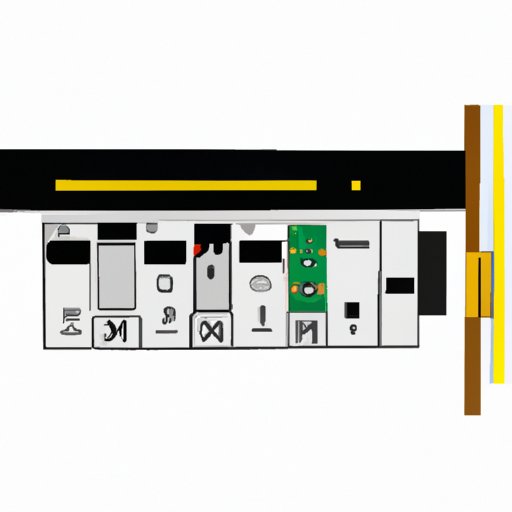Introduction
If you’re a homeowner, you’ve likely experienced the frustration of a tripped circuit breaker. A tripped breaker can disrupt your daily routine and even put your safety at risk. Understanding why your breaker keeps tripping is crucial to solving the problem and avoiding further damage. In this article, we’ll explore the common causes of breaker tripping, how to diagnose and solve the problem, and prevention tips to avoid future issues.
Troubleshooting Guide: Understanding Why Your Breaker Keeps Tripping
A circuit breaker is designed to protect your home’s electrical system from overload, short circuit, ground fault, or electrical surge. When the electrical current in your home exceeds the breaker’s capacity, it will “trip” or shut off power to prevent damage or a potential fire hazard.
Common causes of breaker tripping include overloading circuits, short circuits, ground faults, and electrical surges. Diagnosing the problem is essential to preventing further damage or even a potential electrical fire.
Common Causes of Circuit Breaker Tripping and How to Fix Them
Overloaded circuits are one of the primary causes of breaker tripping. Overloading can be caused by connecting too many electrical devices or appliances to a single circuit, exceeding the amperage rating of the breaker. You can prevent overload by unplugging unnecessary devices, distributing your load over multiple circuits, or installing a new circuit.
Short circuits occur when a hot wire comes into contact with a neutral wire or ground wire. This can be caused by damaged wiring, loose connections, or faulty devices. You can fix a short circuit by identifying and repairing or replacing the damaged wiring or device.
Ground faults happen when a hot wire comes into contact with a ground wire or a grounded surface. They can be caused by damaged or moisture-damaged wiring or a faulty device. To fix a ground fault, identify and replace the damaged wiring or device.
Electrical surges occur when the voltage in your home’s electrical system exceeds its capacity, causing a sudden, unexpected increase in current flow. This can be caused by lightning strikes, power outages, or faulty electrical equipment. Installing surge protectors can prevent this issue.
Is Your Breaker Tripping? Here’s How to Diagnose and Solve the Problem
Diagnosing your breaker’s problem is relatively simple with the right tools and methodical approach. Begin by turning off all devices connected to the affected circuit, and then turn the breaker back on. If it trips immediately, it is likely a short circuit or ground fault. If it doesn’t trip, gradually turn on devices until the breaker trips to isolate the cause.
To fix the problem, turn off the affected circuit and connect essential devices to a different circuit if possible. If the cause is a damaged device or wiring, replace or repair it. If the issue remains unresolved, call an electrician to identify and fix the problem.
The Ins and Outs of Breaker Tripping: Causes, Prevention, and Solutions
Avoiding breaker tripping is critical to protecting your home and providing a safe environment for your family. Prevention tips to avoid future breaker tripping include distributing loads evenly across circuits, installing additional circuits, and replacing faulty wiring or devices. Regular maintenance and inspections can help keep your electrical system in good condition.
If your breaker keeps tripping, don’t hesitate to call a professional electrician. They can diagnose and fix the issue quickly and safely, preventing further damage or injury.
When Breakers Trip: A Comprehensive Guide to Understanding and Solving the Problem
Summing up, diagnosing and fixing a tripped circuit breaker can be done by following a troubleshooting guide understanding how breakers work and common causes of circuit breaker tripping like overloaded circuits, short circuits, ground faults, and electrical surges. It’s essential to remember to maintain your electrical system and observe prevention tips to avoid future tripping problems. However, if you’re still having the problem after applying prevention tips, do not hesitate to call an electrician.
Conclusion
Now that you understand why your breaker keeps tripping, it’s time to diagnose and fix the problem. Remember to follow the troubleshooting guide, observe prevention tips, and seek professional help when necessary. With proper maintenance and attention, you can protect your home, your family, and prevent further electrical complications.
(Note: Is this article not meeting your expectations? Do you have knowledge or insights to share? Unlock new opportunities and expand your reach by joining our authors team. Click Registration to join us and share your expertise with our readers.)
